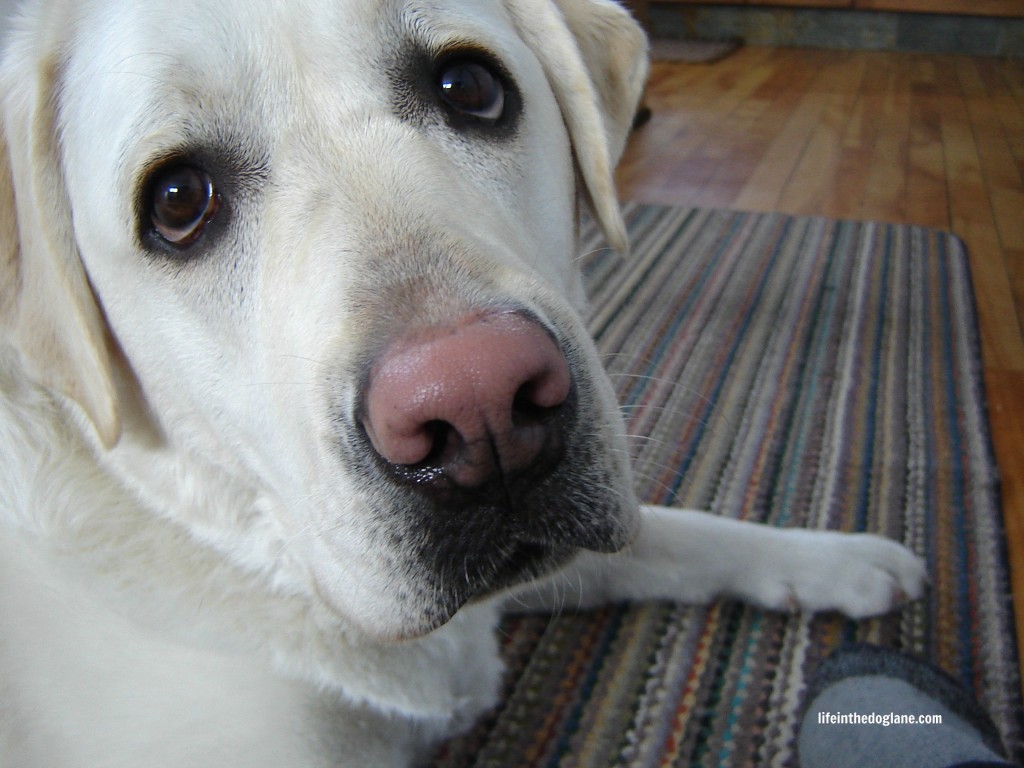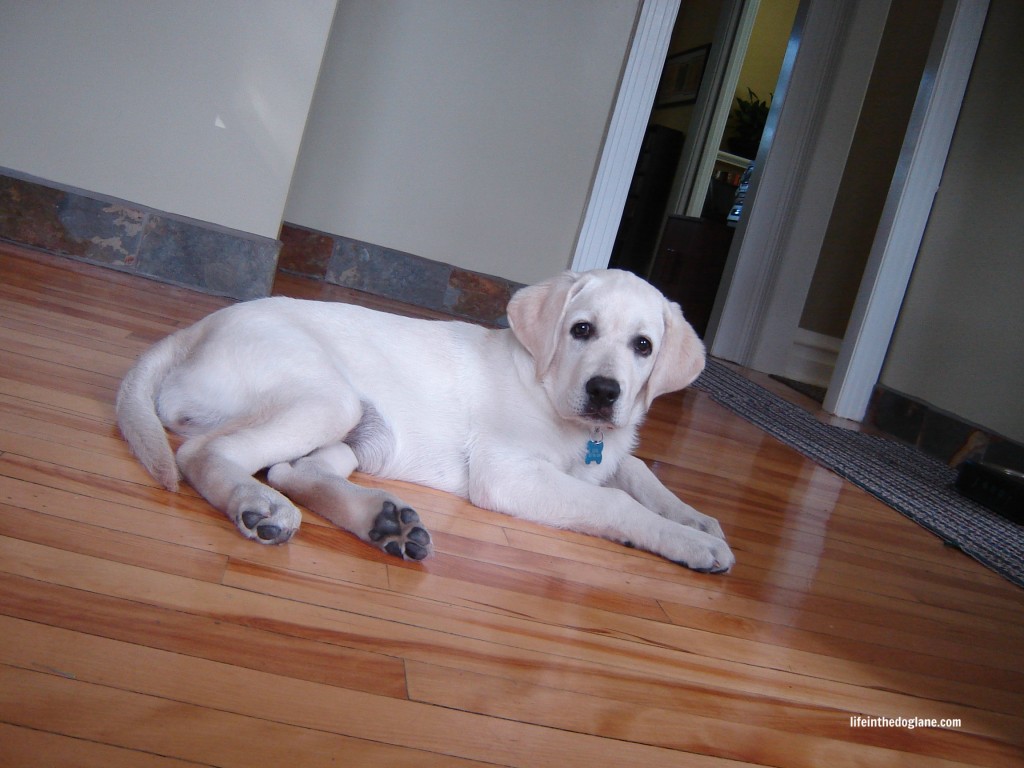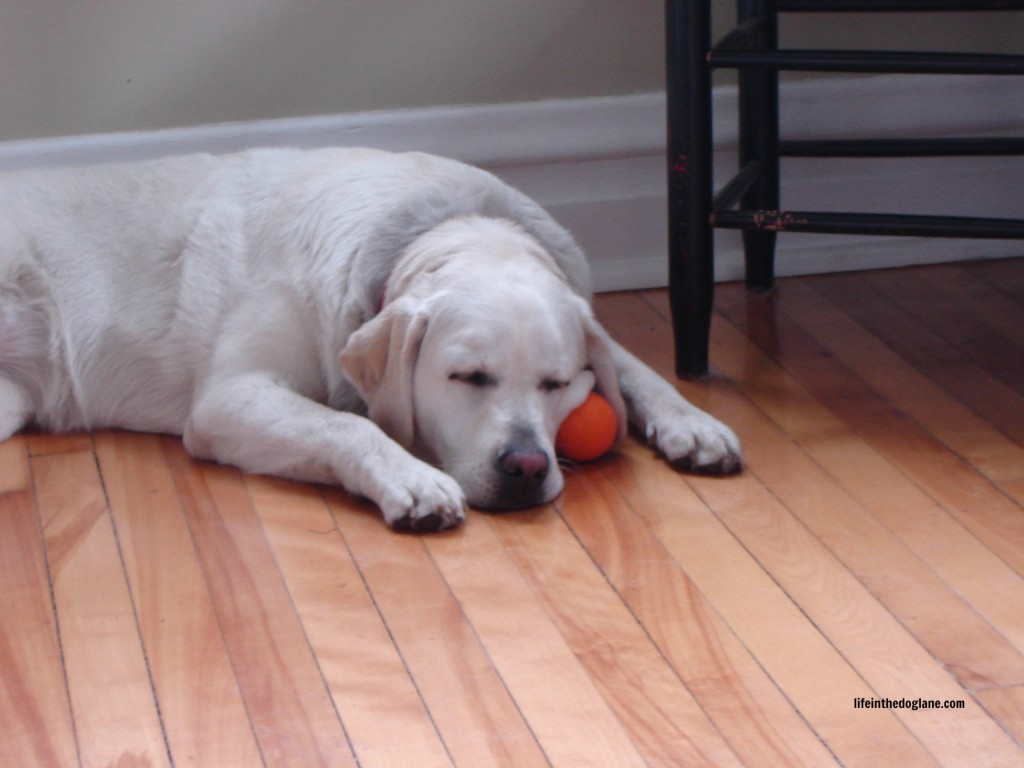Pretty in pink. Snow nose or winter nose; now known to no longer be just a winter condition, or one that happens just to dogs who live in northern climates, but one that affects northern and southern climate dogs equally and at any point during the year or their lifetime.
Case in point, our light-coated Labrador Retriever, Juno.

An unmistakeably, completely pink nose.
But, it wasn’t always like that. It used to be pretty black.
And while we do live in a northern climate, none of Juno’s canine buddies have a snow nose.
So, What Is It?
Snow nose (or winter nose) is a temporary (usually) loss of pigment in the nose of a dog. The decrease in pigmentation of the nose changes the colour of the nose from black to pink. It often starts with either small pink spots appearing across the nose or a thin pink strip becoming visible in the middle of the nose. The sides usually remain black.
As dogs age, snow nose can stay all year long, which is the camp we’re in. Our dog Juno’s nose is completely pink – and has been since her first winter nearly five years ago. We live in a northern climate, so weren’t surprised that our Lab was affected by snow nose. But it never went back. Labs tend to be the most affected by snow nose, followed closely by Golden Retrievers as well as Huskies.
Here’s Juno’s nose in the spring following her first Canadian winter.
Should I Be Concerned?
No. Snow nose is not dangerous.
It is not a defect or a mutation. It’s just a curiosity – and most vets don’t know why it happens, or why it stays around in some dogs and not others, or why it affects some dogs and not others.
What Do I Do About It?
In short, nothing. There’s nothing you can do about it.
We’ve chosen to embrace Juno’s snow nose. People ask us all the time why her nose is pink and if she’s a white Lab or if she’s an Albino dog. There is no such thing as a white Lab, so we just explain that she’s a very light-coloured yellow Lab.
While the light pigment in snow nose can put a dog at risk for sunburn or skin cancer, it’s not preventable or ‘curable’. So, just like humans who are fair-skinned, fair or light-coloured dogs need to be more careful in the sun. Applying a small amount of childrens’ sunscreen to your dog’s nose is all it takes (SPF 15 will do fine). Childrens’ sunscreen is best as it tends to be milder in chemical composition so if your dog does try to lick the sunscreen off their nose, there’s less danger of them ingesting harmful chemicals or reacting to the lotion.
So do your dog a favour. If they too are in the ‘Order of the Snow Nose’, try to embrace it! And slap some sunscreen on that sensitive pink muzzle. Your dog will thank you for it.
Does your dog have a snow nose? Or other interesting pigmentation? We’d love to see a gallery of noses! Tweet us or share your photos with us on Facebook.


Hello Adam and Danielle, I have not heard of snow nose either. I think many readers are not alone. Thanks for the informative post!
Kyra has started to have some pink patches on her nose (since a week ago) but winter is long gone from where I live. It makes her look more unique though. 😀
On the other hand, the Labs from my family haven’t got any snow nose. Indeed they save on sunscreen.
Glad you enjoyed this post too! Snow nose was a surprise condition for us, and we’re glad if we can help shed some light for other people on this curious occurrence 🙂
Does snow nose turn back to black when the weather gets warmer?
My Jack looks just like Juno. He is a very pale Lab. This is his second winter and his nose just went completely pink. I guess, like you, we will have to embrace it. 🙂
Wow, you always come up with great posts that answer those niggling questions I have. I’ve always wondered why some dogs have pink noses and now I know 🙂 I wonder if there is such a thing as ‘doggy sunscreen’?
There definitely is such a thing, but it’s kind of expensive, so we stick with the kids’ stuff 🙂
How interesting, I don’t think I’ve ever heard of this before. People often asked about a change in their dog’s skin color, which is normal. Sometimes they get colored spots on their skin when they grow older. I think my cat had something similar to this with her nose.
Right, those are more common for sure!
Thanks for this great information – I had no clue about snow noses
You’re welcome…glad we could let you in on the secret 😉
I had never heard of this before! Thanks for sharing! I always love learning something new about taking care of our dogs!
Happy to! Thanks Kerry.